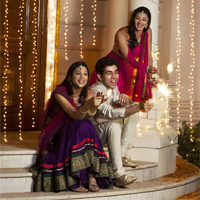Diwali: The Victory of Good Over Evil
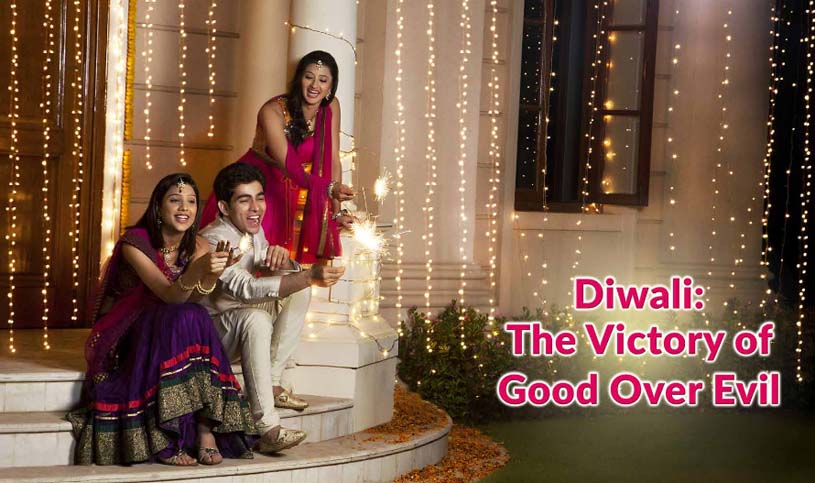
Come the months of October – November, there is an air of festivity all around. It is the auspicious festival of Diwali that makes even the grimmest face smile in anticipation. It is indeed the time for all to usher into the light, to overcome all that is evil, and to celebrate the supreme festival of the Hindus all over the world! Held on the fourteenth day of the waning phase of the moon in the month of Kartik, the night of Diwali is the darkest night of the darkest period of the year, and yet it is the celebration of light. According to Hindu scripture, Diwali marks the homecoming of the illustrious King Rama, who returned after defeating the evil Ravana in a battle that lasted for 14 years.
In celebration, cities and far-flung boundaries of Ayodhya where Ram lived, were lit up with rows of lamps glittering on dark nights to welcome home the divine king. However, at a metaphysical level, Diwali is a festival signifying the victory of good over evil, where evil is destroyed and reduced to ashes by fireworks is the belief of the people. It symbolizes the aspiration of all Hindus to vanquish the ignorance that subdues humanity and to drive away the darkness that engulfs the light of knowledge. Diwali personifies moving from darkness to light. It is a holy tradition, on that symbolizes the victory of good over bad.
As stated in Brhadaranyaka Upanishad,
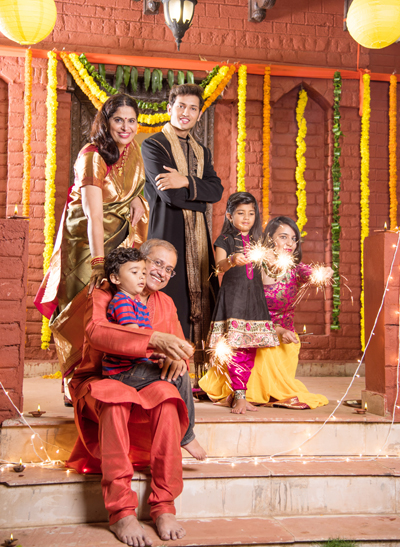
Asato Ma Sad Gamaya (Lead us from untruth to truth)
Tamaso Ma Jyotir Gamaya (Lead me from darkness to light)
Mrityor Ma Amritam Gamaya (Lead me from death to immortality)
Om Shanti Shanti Shanti (Om Peace, Peace, Peace)
Also Buddha said: Appo Deepo Bhav. Be a light unto yourself. Epitomizing the triumph of good over evil, righteousness over treachery, truth over falsehood, and of light over darkness, Diwali is just not a festival; it is an integral part of our being, of our lifecycle and our very existence in this beautiful world. It is the message of Upanishads, sages, and all enlightened Beings.
Celebrated joyously all over India and also abroad by NRIs, it is also the festival of wealth and prosperity. Diwali is a festival where people from all age groups participate. They give expression to their happiness by lighting earthen ‘diyas’ (lamps), decorating houses, bursting firecrackers, and inviting near and dear ones to their households to partake in a sumptuous feast. The lighting of lamps is a way of paying respect to God for the attainment of health, wealth, knowledge, peace, valor, and fame.
Now, when we look into present day scenarios, we find a significant change in the perception of Diwali, especially among younger generations. For the millennials, the occasion is to indulge in material pleasures and ‘enjoy’ the time. And no doubt, this is a gross fault of their parents in this matter – as they also fail to educate the true meaning and significance of Diwali to their kids. As such, the festival has become more an event to burn firecrackers, buy gifts, indulge in food and drinks rather than realize and practice the inner essence of the festival.
Along with changing times, the methods of celebrating Diwali have also witnessed new twists and turns. The contemporary era has commercialized the entire event. It is not that commercialization has affected the spirit of cheerfulness in any sense. Rather, it has helped Diwali earn global recognition. Earlier, any event was ritualized in a modest manner. But, as India joined the global bandwagon and became exposed to new cultures and traditions, the methods of celebrations too were extended.
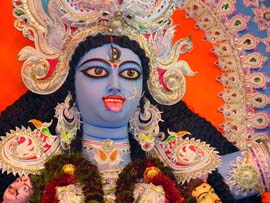
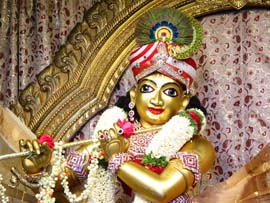
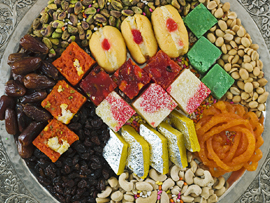
Amidst the frenzy involving Diwali, it should not be forgotten that the festival is not only about celebrations such as lightings, firecrackers, cleanliness, colorful rangoli making, social gatherings to exchange greetings and sharing sweets with your loved ones, but it is also a festival that is filled with spiritualism and religious activities such as worship of Goddess Lakshmi, Lord Ganesha, Mother Kali, Lord Chitragupta, and Govardhan Parvat.
It is important to understand the significance of the festival and believe in the same. For example, we all know that lighting lamps is a mandatory custom on the Diwali. Now, what is the significance of lighting a lamp? These lamps are meant as symbols, as a means to an end. But, what is this end? What is the real darkness, which must be dispelled? It is the darkness within us, the darkness of ignorance, selfishness, and duality that has to be eliminated. Indian culture says that we are all one. Indian culture says that as our brothers and sisters suffer in darkness, so we too are suffering, although we may not be aware of it. It is, therefore, our divine duty to help dispel the darkness in their lives and to help alleviate their suffering.
The lighting of the lamp has other significance also. It is through light that the beauty of this world is revealed or experienced. Most civilizations of the world recognize the importance of light as a gift of God. It has always been a symbol of whatever is positive in our world of experience. To Hindus, darkness represents ignorance, and light is a metaphor for knowledge. Therefore, lighting a lamp symbolizes the destruction, through knowledge, of all negative forces – wickedness, violence, lust, anger, envy, greed, bigotry, fear, injustice, oppression and suffering, etc.
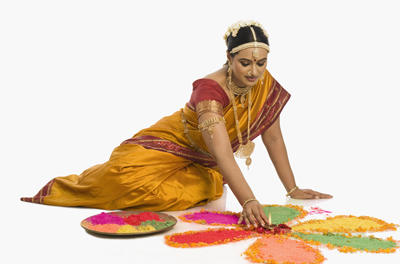
It is thus ironic that though Diwali is popularly known as the “festival of lights,” the most significant spiritual meaning is “the awareness of the inner light.” Central to Hindu philosophy is the assertion that there is something beyond the physical body and mind which is pure, infinite, and eternal, called the Atman (Spirit). Just as we celebrate the birth of our physical being, Diwali is the celebration of this Inner Light, in particular the knowing of which outshines all darkness, awakening the individual to one’s true nature, not as the body, but as the unchanging, infinite, immanent and transcendent reality. With the realization of the Atman comes universal compassion, love, and the awareness of the oneness of all things (higher knowledge). This brings Ananda (Inner Joy or Peace).
Diwali celebrates this through festival fireworks, lights, flowers, sharing of sweets, and worship. While the story behind Diwali varies from region to region, the essence is the same – to rejoice in the Inner Light (Atman) or the underlying reality of all things (Brahman).
It can be said that there might be a paradigm shift in the interpretation of the festival of Diwali, and today, we find commercialization and limitless enthusiasm engulf the occasion. What remains the same however, is that this day is a celebration of life, joy, and goodness. From darkness we enter into light, and light empowers us to do good deeds and bring us closer to divinity. Let us try to believe in this perception and share this with all concerned – work towards a better life and a better society, where the dominance of good over evil would be permanent and irrevocable.

